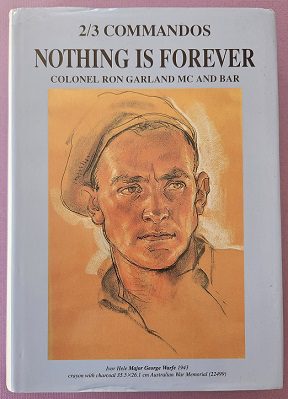Description
Title: The Purple Devils – A History of the 2/6 Australian Commando Squadron, Formerly The 2/6th Australian Independent Company 1942 – 1946
Author: Trigellis-Smith, Syd
Condition: Mint
Edition: 2nd Edition
Publication Date: 2008
ISBN: 0646071254
Cover: Hard Cover without Dust Jacket (Laminated Boards) – 305 pages
Comments: The detailed history of the No.6 Independent Commando Company.
The 2/6th Independent Company formed in May 1942 and sailed for Port Moresby at the start of August. The 2/6th was to have then been flown to Wau, to reinforce the 2/5th Independent Company, but the situation along Kokoda Trail was deteriorating with the 39th Battalion falling back and along the track. Instead of moving to Wau, the 2/6th was instead placed under the command of the 7th Division’s headquarters, which had just sent two brigades up the track to relieve the 39th, and moved to Mount Eirama as the divisional reserve. The next month, as the situation along the track continued to get worse, the 2/6th moved to cover the Goldie River Valley, through which it was thought that the Japanese might to move. During this period, the company operated as five patrols, ‘A Patrol’, ‘B Patrol’, and so on, up to ‘F Patrol’. These patrols ranged through Papua’s jungles, from the Yodda Valley, at the base of the Kokoda Trail, and the jungle tracks around Esau Creek and Brown River. Patrols were even sent along Engineer Road in support of the short lived Honner Force.
By October, American forces were preparing to come into action. On New Guinea’s north coast, a battalion from the 128th US Regiment was preparing to advance from Jaure to either Wairopi or Buna, where it would meet the 7th Division’s 16th and 25th Brigades who were pushing the Japanese back along the Kokoda Trail, and two battalions from the 126th US Regiment that was following the coast from Pongani to Buna. To support the later advance, in mid October the 2/6th was flown across the mountains to Wanigela. From Wanigela the company moved to Pongani, where it patrolled in front of the 126th Regiment’s 3rd Battalion to Buna. The independent company led the way while the American troops followed.
By 20 November the company and the Americans had reached the Buna front. From then until the first week of December, the 2/6th was engaged in the heavy fighting around the airfield named New Strip. In the second week of December, the 2/6th was pulled back to Soputa and then Port Moresby.
In March 1943 the company returned to Australia and after some leave, reassembled at the army’s jungle warfare centre at Canugra, Queensland. This was a period of reorganisation for the independent companies as the 2/6th, along with the 2/3rd and 2/5th Independent Companies were brought together to form the 2/7th Cavalry (Commando) Regiment. Similarly, the title independent company was later changed to cavalry (commando) squadron. By the end of the year the 2/6th Independent Company had become the 2/6th Cavalry (Commando) Squadron. This name was later simplified to just commando squadron. In the meantime, the 2/6th was preparing for its next campaign.
The 2/6th had sailed from Townsville for Moresby in August, and then, in the middle of September it was flown to Leron, in the Markham Valley. The 2/6th was to support the 7th Division in its coming Ramu-Markham Valley campaign where it provided ‘flank’ protection for the division by carrying out reconnaissance and long range patrols, and, where necessary, capturing and holding ground. The 2/6th performed these roles well, particularly at Kaiapit, where, on 19 and 20 September, it captured the village and then repelled a large Japanese counter attack. The 2/6th returned to Australian in April 1944.
The 2/6th did not go into action again until almost the end of the war. For the remainder of 1944 and into 1945, the 2/6th was based in the Mapee/Kairi area on the Atherton Tablelands, where it trained and conducted exercises with the rest of the 7th Division.
Between May and July, the 7th and 9th Divisions made a series of landings on Borneo as part of the OBOE operations. The first landing was made at Tarakan on 1 May by a brigade of the 9th Division, while the rest of the division landed at Brunei Bay and Labuan Island in June. The 7th Division landed at Balikpapan on 1 July.
For Balikpapan, the 2/6th was attached to the 25th Brigade and went ashore on the second day of the battle. Over the next three weeks the squadron supported the brigade in its advance along the Milford Highway. Among its other tasks, the 2/6th conducted a number of successful ambushes along Pope’s Track.
Following Japan’s surrender and the end of the war, the ranks of the squadron thinned quickly as men were discharged, transferred to other units, or volunteered for service in Japan with the British Commonwealth Occupation Force. For those who were left, the squadron returned to Australia at the end of December. In mid January 1946 the 2/6th Commando Squadron was disbanded.
Includes Nominal Roll, Honours & Awards and List of Wounded




